 |
 |
 |
A Nintendo community
by the fans!
|
 |
 |
∧ |
Forum main |
|
 |
Top Ten 3D Classics for 3DS Wishlist Part 2: SNES [top ten]
|
|
|
 |
 |
|
 |
 |
|
 |
 |
 |
 |
When Nintendo announced the eShop for the 3DS, it announced a couple of things. First, it announced that it would include the DSi Ware Store. Second, that it would feature a new portable Virtual Console. But, more interestingly, that it would feature newly remade NES and SNES games that would take advantage of the features of the 3DS. Nintendo dubbed these games, 3D Classics. The first titles, Excitebike, Xevious, and Urban Champion, have already come out and demonstrate some of the upgrades that can be done to these old games. The following are the 3D Classics I’m most interested in seeing for the SNES. In addition, I will also discuss how the title can take advantage of the features of the 3DS. As a default, I would like every title to feature Widescreen 3D, no HUD (Heads Up Display) on the top screen (unless specified), and a customizable control scheme, and optional C-Pad controls. Also, most of the extra bells and whistles, such as level selects and extra functionality should be given to the player after they beat the games as a reward for their hard work. Even though it is very unlikely that Nintendo will ever make any 3D Classic SNES games, I'm still doing the Top Ten just in case I'm wrong. Also, I have a feeling that the SNES will eventually join the NES, GB, GBC, and GBA in the 3DS Virtual Console. If it does, and there are no 3D Classics SNES games, then just disregard the upgrades and take this as my Top Ten 3DS Virtual Console: SNES Edition.  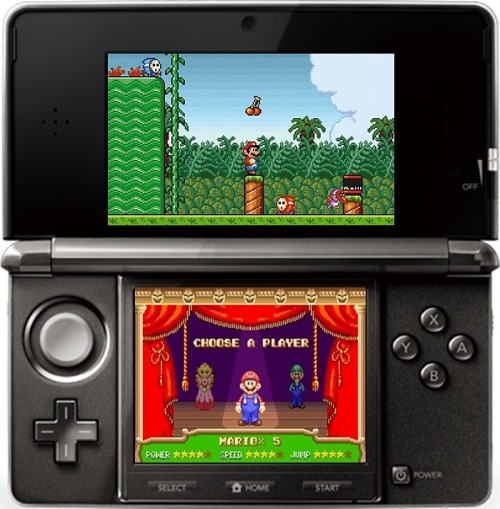 |
 |
 |
 |
 |
 |
09/19/11, 22:30 Edited: 09/20/11, 05:59
|
|
|
|
|
 |
 |
 |
|
 |
 |
|
 |
 |
|
 |
 |
|
 |
 |
 |
 |
 |
Release Date: December 17, 1993 Developer: Capcom Publisher: Capcom Like I’ve said before, every system needs a Mega Man game. And the SNES got a couple of excellent ones. The Mega Man X series is a spin-off of the original Mega Man series. The main character is not Mega Man, but a more advanced version called “X” built by Dr. Light before he died. X was discovered by Dr. Cain, who used X as a base to build more “reploids” for the benefit of mankind. The reploids eventually go bad, being led on a revolution by another powerful reploid called Sigma. This is where Mega Man X begins. The Mega Man X games for the SNES were a bit of a departure for the Mega Man series. The games were given a more serious tone and a more flexible hero. You could still fight other reploids and adapt their abilities into X, but now you could upgrade your armor, gain dash moves, and even learn some Shotokan techniques. If I had to choose, I would choose to have to the first game in the series. Upgrades: I would like a Save Feature after every level. No Level Select is needed because the game already features one, unless you want to go to the later levels. The touch screen can be used as a menu for weapons, items, and energy tanks. A Boss Rush Mode would be great. It would also be cool to play as the bosses, like in Mega Man Powered up. 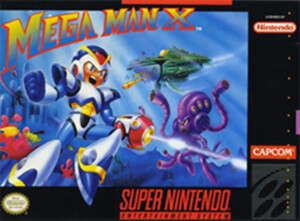 
|
|
 |
 |
 |
 |
|
|
 |
 |
 |
|
 |
 |
|
 |
 |
|
 |
 |
|
 |
 |
 |
 |
 |
Release Date: March 1st, 1993 Developer: Nintendo, Argonaut Software Publisher: Nintendo Star Fox was the first 3D polygonal game developed on the SNES. It used new technology in the form of the Super FX Chip. “The Super FX Chip was a customed developed RISC processor was that programmed to act like a graphics accelerator chip that would draw polygons to a frame buffer in the RAM that sat adjacent to it. For those games, the data in this frame buffer were periodically transferred to the main video memory inside of the console using DMA in order to show up on the television display.” In other words, it allowed the 16-bit system to use rudimentary polygons as graphics for 3D gameplay. The game itself was a lot of fun. You played as Fox McCloud, leader of the mercenary squadron called Star Fox, composed of anthropomorphic animals Slippy Toad (a toad), Falco Lombardi (a Falcon), and Peppy Hare (a hare). You are tasked by General Pepper (a dog) to defeat the evil Emperor Andross (a monkey) who has unleashed his army against the good forces of the Planet Corneria. You fight alongside your squadron whom you have to rescue all the time. An SNES sequel was developed for the game but was never released because they wanted to focus on the N64. Star Fox is so difficult to emulate that it has yet to arrive in the original Virtual Console. Hopefully, the 3DS can serve as the Nintendo system that is finally able to emulate this masterpiece. Upgrades: Make all HUD elements appear on the lower screen, even the character dialogue. Save after every level. Stage select. Full playable version of Star Fox 2. 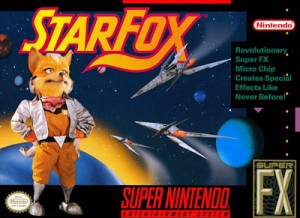 
|
|
 |
 |
 |
 |
|
|
 |
 |
 |
|
 |
 |
|
 |
 |
|
 |
 |
|
 |
 |
|
 |
 |
 |
 |
 |
Release Date: November 21, 1990 Developer: Nintendo EAD Publisher: Nintendo The Super Mario Bros. series is my favorite platformer series of all time. The NES games were brilliant games that became instant classics. The SNES follow, up Super Mario World, follows this tradition while adding better graphics, sound, and other technological advances that were impossible to be performed on the original NES. One of these advances was Yoshi, Mario’s dinosaur buddy. With the power of the SNES, Shigeru Miyamoto was finally able to achieve his dream of having Mario ride a dinosaur. It was a strange dream, indeed, but one that became perfectly harmonious with the gameplay once you liberated Yoshi from his egg prison. After Super Mario World, Nintendo did something that was highly irregular at the time, but Tuesday for us in this day and age. They remade four of their masterpieces into one game. Super Mario All-Stars included graphically and aurally enhanced versions of Super Mario Bros. Super Mario Bros 2, Super Mario Bros 3, and the Japanese version of Super Mario Bros 2, which was redubbed “The Lost Levels.” All the games looked and sounded even better than their original versions and you could now save your progress, but their gameplay remained the same. The last “Super Mario Bros.” game for the SNES is not a Super Mario Bros. game at all. In Super Mario World 2: Yoshi’s Island, Baby Mario was separated from the stork who was carrying him to his family. He lands on Yoshi’s Island where the inhabitants, Yoshis of different colors, must work together to get Baby Mario back to his family. The game plays very differently from other Super Mario games. You control one Yoshi at a time and must take Baby Mario from the beginning of a level to the end, where a different Yoshi will continue the journey. If Yoshi is separated from Baby Mario, he will have a few seconds to reunite with him. If the timer runs out, Baby Mario will be kidnapped by Baby Bowser’s Minions and you will lose a live. All of these Mario games are excellent and I want all of them to be available on the 3DS in some way or another. However, if I had to choose, I would like to have Yoshi’s Island. I have barely played this game so it will be fresh for me. In addition, this game uses the Super FX Chip 2, therefore, it is very difficult to emulate and has yet to appear on the Virtual Console. I’m hoping Nintendo will be able to get this game working on the 3DS. Upgrade: The Touch screen can display a map of where you are in addition to all the information you usually have on the top screen. You can also use the touchscreen to choose any item you have collected in the game, instead of having to use select them outside only. Add extra elements from Super Mario Bros. Deluxe, Super Mario Advance, Super Mario Advance 4, and Super Mario Advance 3. 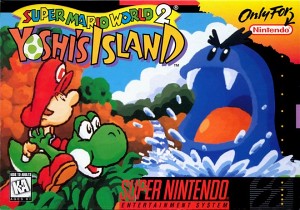 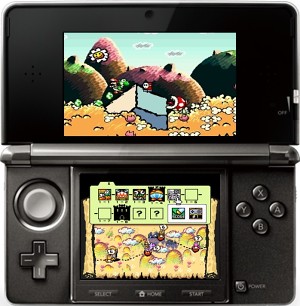
|
|
 |
 |
 |
 |
|
|
 |
 |
 |
|
 |
 |
|
 |
 |
 |
 |
The Legend of Zelda: A Link to the Past |
 |
Release Date: November 21, 1991 Developer: Nintendo EAD Publisher: Nintendo The Legend of Zelda: A Link to the Past is my favorite SNES game. It is an amazing evolution of the first Legend of Zelda. It introduced many new things to the series: Better graphics and sounds, scrolling through areas that are bigger than the current screen, diagonal movement, etc. But the biggest addition to the game is one that, just like Super Metroid’s map, was adopted by many other series, including Metroid Prime. This element is a Parallel Dimension, known here as the Dark World. The Dark World is analogous to the Light World but twisted by the heart of its ruler Ganon. A Link to the Past is a prequel to the first two Zelda games. This Link, receives a telepathic message from Princess Zelda and he goes to the castle to save her. He learns that a wizard named Agahnim is kidnapping maidens in order to open a portal to the Dark World. Link eventually meets up with Agahnim and defeats him, but the portal to the Dark World has already opened. This is where the game truly opens up. I am confident that this game will reach the 3DS in one way or another. Miyamoto has already expressed interest in remaking this game in 3D and his word is law in Nintendoland. So I believe it is not a matter of if, just when, and how.  
|
|
 |
 |
 |
 |
|
|
 |
 |
 |
|
 |
 |
|
 |
 |
 |
 |
Honorable Mentions: Alexay, Contra III: The Alien Wars,Demon’s Crest, Earthbound, Final Fantasy III (VI), Final Fight Trilogy, Kirby Super Star, Kirby’s Dream Land 3, Mario Paint, Ninja Gaiden Trilogy, Pilotwings, R-Type III, SimCity, Super Adventure Island, Super Bomberman, Super Ghouls & Ghosts, Super Mario Kart,Super Mario RPG,Super Punch Out!!, Super R-Type, Super Smash TV, Teenage Mutant Ninja Turtles IV Turtles in Time, Zombies Ate my Neighbors. Tune in soon for my 3 part Top Ten Licensed Games for NES, SNES, and Genesis on the 3DS Virtual Console. 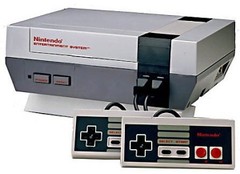  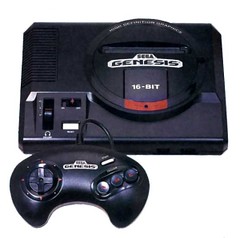 Then Top Ten N64 Ports/Remakes for 3DS followed by Top Ten Gamecube Ports/Remakes for 3DS. 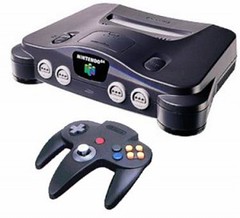 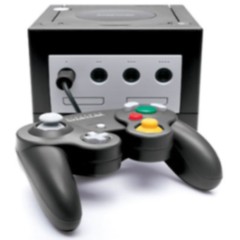 The Trivia Section did not fit into the body of the article, so you will find it in the first post.Negative World 3DS Links
URL to share (right click and copy) The Trivia Section did not fit into the body of the article, so you will find it in the first post.Negative World 3DS Links
URL to share (right click and copy)
|
 |
 |
 |
 |
 |
09/19/11, 22:30 Edited: 09/20/11, 05:59 |
|
|
|
|
 |
 |
 |
|
 |
 |
|
 |
|
|
 |
 |
|
 |
 |
|
 |
 |
 |
 |
 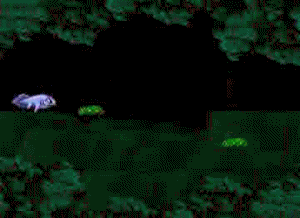 10. E.V.O. Search for Eden: Trivia for E.V.O. Search for Eden: 10. E.V.O. Search for Eden: Trivia for E.V.O. Search for Eden: E.V.O. was developed by Almanic Corporation in early 1992 under the Japanese title 46 Okunen Monogatari ~Harukanaru Eden e~ (literally, "4.6 Billion Year Story: To Distant Eden") and was headed by project director Takashi Yoneda, who had designed Quintet's Actraiser three years prior. The title was largely based on the company's earlier text-based adventure game 46 Okunen Monogatari ~The Shinka Ron~(literally, "4.6 Billion Year Story: The Theory of Evolution"), released for the NEC PC-9801 home computer in 1990, and carries over much of the game's theme, designs and story. Although the design staff had opted to give a fantastic rather than scientific representation of evolutionary theories and planet development, the crew was assisted by teachers from local schools to provide information on geology and biology to the programmers. While some of the game's designers were similar to that of the original PC-9801 title, much of the staff for the Super Nintendo Entertainment System version was made up of a younger, less experienced crew, which Yoneda stated made things "interesting" during development. The music for E.V.O. was composed by Koichi Sugiyama who is most famous for his work on Enix's Dragon Quest series. The game was his first composition for a 16-bit system, with each theme made to fit the imagery of a particular era, which director Takashi Yoneda stated he was "quite passionate" about. 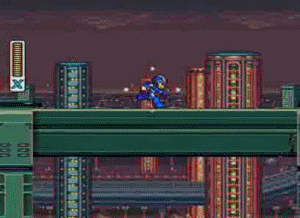 9. Mega man X Trilogy:Trivia for Mega Man X: 9. Mega man X Trilogy:Trivia for Mega Man X: The first boss (Vile in his Ride Armor) is the smallest intro stage boss in the series. Other intro stage bosses are often huge, taking up half the screen in many cases. In Mega Man X Collection, when the Hadouken is used, X does not shout Hadouken! like in the SNES version. Trivia For Mega Man X2: This game is notorious among the X series for having been terribly localized, large portions of the script being completely changed, taking out many of the lines linking Serges with possibly being Wily, and making all mentions of X into "Mega Man" to try to push the notion of X being the original Mega Man. Originally, the only two persons who ever refer to X as "Rockman X" are Dr. Cain, and Serges. The Armor Part could be considered the first Giga Attack in the series, as it is identical to the others: it requires a gauge to be completely charged up to be executed, and it damages the entire screen, similar to the Falcon Armor's Giga Attack. Although Zero doesn't become fully playable until two games later, he also uses his first Giga Attack in this game if X fights him in the last stage. This is one of the strange few cases in the entire Mega Man series in which the final battle takes place in an earlier stage. Mega Man X2 is the first game to give the players hints about Zero's past. The map in the stage select screen will have changes reflecting the defeat of certain bosses. For example, the lava from Flame Stag's volcano base will cool down and harden, Wheel Gator's tank will be trashed after his defeat. Also, after defeating the bosses again in the North Pole base, selecting it on the stage select screen will show that it's been destroyed. The sequence of stars at the ending is similar to that of Mega Man 7 at the ending. Even though the player goes back to the X-Hunter's castle, they will be in Magna Centipede's stage, but the fight against Sigma is below the room where the player fights Chop Register. It is speculated that Serges (the so-called leader of the X-Hunters) was actually a reincarnation of Dr. Wily, who had his artificial intelligence placed inside the Reploid body of Serges, which would explain how he was familiar with Zero's design. However, Capcom has never given any official word on this. Trivia for Mega Man X3: Neon Tiger's stage music bears a strong resemblance to Guns 'n Roses' My Michelle. Crush Crawfish's stage music early segment sounds very similar to the NES Teenage Mutant Ninja Turtles title screen demo music. This is the only game in the Mega Man X series without a fire-elemental Maverick, though oddly, Dr. Doppler, Vile, and Sigma use fire attacks. In the CD versions, during Volt Catfish's intro, a robot very similar to Auto can be seen. This is the first game that allows the player to control Zero. At the end of Mega Man X3, the text says: "To save mankind, he (X) must destroy Zero". This came to pass in Mega Man X5, with a duel between the two of them in Sigma's lair, though it was not actually X who destroyed Zero, but rather Sigma. It should be noted, however, that the Japanese version of the line above never mentions anything about destroying Zero, just that he has to fight him. In the US release of Mega Man X Collection, the European version for Sega Saturn and Sony PlayStation was used instead of the U.S. SNES version. In the Sega Saturn and Sony Playstation versions, the traditional Robot Master stage intro music is used near the end of the Mavericks' introduction FMVs. That tune is also used in the first Mega Man X game (as well as its remake Maverick Hunter X). In the Sony Playstation version, as well as the Saturn version, the ending credits theme has an uncanny resemblence to the ending theme heard in Resident Evil, another game made by Capcom which was made in the same year for the same consoles as with Mega Man X3. This game makes the first instance of X using the Z-Saber when conditions are met, the second and last instance is Mega Man X6 where X has the Z-Saber by default. 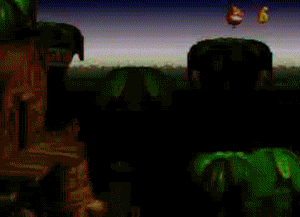 8. Donkey Kong Country TrilogyTrivia for Donkey Kong Country: 8. Donkey Kong Country TrilogyTrivia for Donkey Kong Country: The Gnawty enemy is pictured as blue on the box art while they were gray in-game. They eventually became blue in Donkey Kong 64 and the GBA port. This game was Donkey Kong's only playable appearance until Donkey Kong Country Returns, despite the game's sequel and triquel games bearing the Donkey Kong Country name. This game marks the only playable appearance of Winky (outside of cameos and remakes; Expresso was technically playable in a mini-game in the GBA remake of DKC2). After defeating a boss, a giant banana would drop. In the SNES version it had a Nintendo logo on it, but was removed in later remakes. Trivia for Donkey Kong Country 2: The subtitle of the game in North America was originally "Diddy Kong's Quest", but changed to "Diddy's Kong Quest" before release. This could either be a translation issue, a reference to Diddy on a quest to get a Kong (DK), or a play on the word "Conquest". When the player defeats K. Rool, Cranky tallies their DK Coin total and compares that with the performance of other Nintendo characters. Mario, Yoshi, and Link make a cameo at that point. A few more cameo appearances of non-Nintendo characters' trademark devices are that of Sonic the Hedgehog's shoes and Earthworm Jim's gun and tights by a trash can with a sign that says "No Hopers." Also, in the Monkey Museum, the player can see a poster of Chief Thunder, a character from the game Killer Instinct. A Virtual Boy version of Donkey Kong Country 2 was in development for a short time, but was never completed due to the system's failure. The name of every boss in this game begins with the letter "K". Cranky will occasionally ask if the player had tried "Cranky Kong Country" in this game. Having a total of seven animal buddies, DKC2 has the most animal buddies in one game of the DKC series (however with enemies such as Ghost Rope and Krochead that can technically help, this number is debatable). Trivia for Donkey Kong Country 3: In this game, Wrinkly Kong is sometimes playing Super Mario 64 on her Nintendo 64. A remixed version of the song "Inside the Castle Walls" from SM64 can be heard while she plays it. Many enemies from DKC2 have been replaced with new but similar enemies. DKC3's Gameboy Advance remake is the only remake to feature an entirely different soundtrack from it's original. Given this, and an entirely new world, many tweaked roles and features of NPC allies and new sound effects for characters, could make the game's GBA remake the most drastic change in the remakes of the DKC series. The Gameboy Advance remake is the only Donkey Kong Country remake to not feature a Scrapbook. The concept of Dixie rolling on Kiddy like a Steel Keg seems to have inspired the ability to do so with Donkey Kong and Diddy Kong in Donkey Kong Country Returns. Cranky Kong makes his first playable role in the Donkey Kong series in the GBA version in Cranky's Dojo. This is the first and only Donkey Kong Country game that does not feature Donkey Kong or Diddy, but focuses on Dixie instead. Originally, it was intended that Donkey and Dixie would be playable in this game together and mechanically enhanced Diddy Kong would be the 6th boss. However, for unknown reasons, Donkey is missing with Diddy and Dixie is accompanied by her cousin Kiddy, who acts very much like Donkey. This is the only game in the Donkey Kong Country series to not feature Rambi at all. 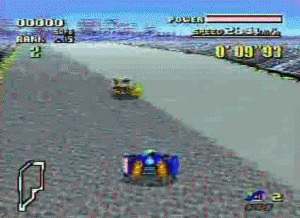 7. F-ZeroF-Zero Trivia: 7. F-ZeroF-Zero Trivia: This game appears as one of the microgames in 9-Volt stage in the game WarioWare, Inc.: Minigame Mania. The game was produced by Shigeru Miyamoto and designed by Isshin Shimizu. Takaya Imamura, one of the art creators for the game, was surprised to be able to so freely design F-Zero's characters and courses as he wanted since it was his first game. Notable in the development of F-Zero was its use of Mode 7 graphics. Mode 7 is a form of texture mapping available on the SNES which allows a raster graphical plane to be rotated and scaled freely, simulating 3D environments without processing any polygons. The Mode 7 rendering applied in F-Zero consists of a single-layer which is scaled and rotated around the vehicle. 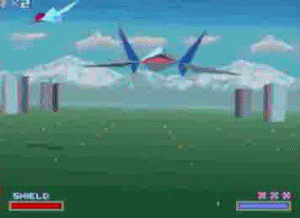 6. Star FoxTrivia for Star Fox: 6. Star FoxTrivia for Star Fox: In the PAL regions, this game was released as Starwing. It is believed that Nintendo changed the name on the game's box artwork and title screen to Starwing in PAL versions to avoid any possible court cases with the then trademark holders (Mythicon disbanded soon after the US release of their version of Star Fox). For similar reasons, Star Fox 64 was renamed Lylat Wars in Europe four years later. However, according to an interview with Dylan Cuthbert in the British Official Nintendo Magazine, the renaming of the game was to avoid confusing the game with an unrelated European company called Star Vox. Shigeru Miyamoto was inspired to create the arches in Star Fox after visiting Japan's Shinto shrines. The original Star Fox was Nintendo's first 3D console game. In Europe, Star Fox and Star Fox 64 are known as Star Wing and Lylat Wars, respectively. Fox McCloud's signature vehicle, the Arwing, got its name because it resembles the letter "A". Miyamoto was a fan of TV shows featuring puppets, and designed the original Star Fox box art featuring a puppet of series' hero Fox McCloud. Designer Takaya Imamura used a popular Japanese expression about fighting like dogs and monkeys as inspiration, which explains why the Cornerian army is full of canines that battle evil monkeys; General Pepper's a dog, Andross is a monkey. A Nintendo employee used a toad as a personal mascot. Nintendo cancelled Star Fox 2 for Super Nintendo, despite it being finished. That said, the company reused elements (at least 30 percent of the game) in Star Fox 64, most notably All-Range mode, the multiplayer mode, and the Star Wolf scenario. Nintendo also cancelled Star Fox games for both Virtual Boy and the arcade. At first, Slippy ended everything sentence with the word, "Ribbit!" This was later removed. The Star Fox team we are used to is not the first Star Fox team. The original members were James McCloud (Fox’s father), Peppy Hare, and Pigma Dengar (a pig). 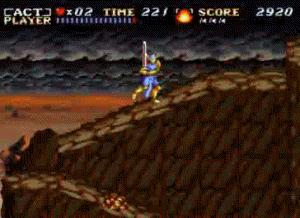 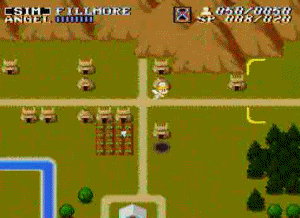 5. ActraiserTrivia for Actraiser 5. ActraiserTrivia for Actraiser: Some believe that the game is an allegory for Judeo-Christian monotheism. As the Japanese text for the prequel, ActRaiser 2, reveals, the protagonist's original name was God, and the antagonist is Satan. According to Douglas Crockford's Expurgation of Maniac Mansion, Nintendo of America had a strict policy regarding game content in the early 1990s, especially in regards to material which could be deemed offensive, a blanket category which prohibited the inclusion of any overtly religious themes or plotlines in a game. Hence, the main character of the game became "The Master", although the allegory remains obvious, as he travels the globe in a palace on a cloud, accompanied by an angel; slays demons; creates life; performs miracles; and is prayed to by the populace of the world. The second boss of one village in the game is a false god--in actuality a demon with the head of a cobra--to whom the villagers have been praying. The "Master" must invade the unholy temple and kill the false god to restore peace to the village. The allegory becomes much clearer in the final moments of the game, when the Angel and "Master" discover that the churches of the world have become empty, people having lost their concept of faith and need for a deity now that their lives have had all suffering removed. Saddened, but awaiting the day when he might be needed again, the master's sky palace swirls upward into the Heavens and vanishes. Besides the language and the subtext omissions discussed above, there were some drastic changes between the Japanese and other versions. A few graphical and musical changes were made (the original logo typeface being much more stylised, and without the intercap "R"), and the action sections are more difficult in the Japanese version. In the US/NTSC & PAL versions, time flows more quickly in the simulation mode, greatly shorting the amount of time needed to complete the area. This also decreased the number of enemy encounters. In the US/NTSC version, the Story Mode featured easier battles, while the action-only "Professional" mode (unlocked at finishing Story Mode) contains the Japanese difficulty level. In the PAL release, the Action Mode ("Professional" mode) is available from the menu screen right from the start. Story Mode features three difficulties: Hard (Japanese), Normal (American), and an exclusive Easy mode. A modified version of the game was made for the Nintendo Super System arcade platform. This arcade version featured only the action stages, similar to the "Professional!" mode in the retail version. Among other changes, the game had a different scoring system, and was much more difficult than the retail version: for example, contact with spikes is instantly fatal to the player, instead of merely causing loss of HP. Square Enix made a port of the original ActRaiser for mobile phones, published by Macrospace on September 1, 2004. It consists of the first three side-scrolling levels of the game, with the town-building portions completely omitted, and is generally seen as inferior to the original game. ActRaiser also became available on the Wii's Virtual Console. It was released in Japan on March 20, 2007, in Europe on April 13, 2007, and North America on May 28, 2007. As the game was published by Enix, Square Enix currently holds the rights to the Virtual Console edition. An unofficial Japanese-to-English translation has been released for the game which restores the Judeo-Christian references, among other changes. 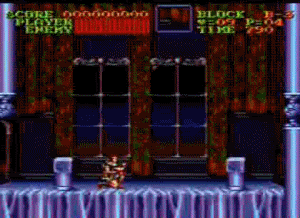 4. Super Castlevania IVTrivia for Super Castlevania IV: 4. Super Castlevania IVTrivia for Super Castlevania IV: Some of the enemies' graphics from Super Castlevania IV would eventually be recoloured and ported into Castlevania: Symphony of the Night, the most famous examples being Slogra and Gaibon. The Dancing Spectres of stage 6 are named Paula Abghoul and Fred Askare, a parody on Paula Abdul and Fred Astaire. Super Castlevania IV's soundtrack includes remixes of songs from past games. These include "Vampire Killer" (from Castlevania) and "Bloody Tears" (from Simon's Quest), two themes that would eventually reappear in many more games. "Beginning", the song played on stage 1 from Castlevania III: Dracula's Curse, is also present. "Theme of Simon Belmont", now considered to be the character's trademark theme song, was played on the last stage in Castlevania Chronicles/Akumajō Dracula X68000, the last half of the final stage in Castlevania: Bloodlines, and as a secret music track in Castlevania: Portrait of Ruin. The "Theme of Simon Belmont" victory fanfare, which was used in Super Castlevania IV whenever a crystal was obtained after defeating a boss, was also featured in Castlevania: Legacy of Darkness if one of the six children was rescued in Henry Mode. The North American and PAL Region localizations of the game contain some differences from the original Japanese version which is named Akumajō Dracula. The Japanese version of this game was named Akumajō Dracula because this game is another remake of the original Akumajō Dracula for the Nintendo Famicom Disk System. In the Japanese version of the game, there were crosses on top of some of the tombstones in the introduction. This was removed for the North American and PAL Region localizations to avoid religious controversies. The misspelled name "Dracura" (a case of Engrish) is also clearly written (in Roman letters) on the tombstone in the Japanese version; this was replaced with an unreadable smudge in the Western versions. As with many games on the Super NES, there were censorship issues as well. The statues in stage 6, which were originally topless, were redrawn wearing tunics, although Medusa remains topless. Blood dripping from the ceilings as well as pools of blood in stage 8 were re-colored from red to green, effectively turning it into slime or acid, and blood dripped from the opening logo in the Japanese version of the game which resembled the original Akumajō Dracula title screen from the Family Computer Disk System. 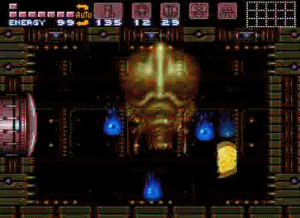 3. Super MetroidTrivia for Super Metroid: 3. Super MetroidTrivia for Super Metroid: Super Metroid is the only main series game whose title does not begin with the word "Metroid." Many scenes from Super Metroid are recreated in scenes from Metroid: Other M. Mother Brain very closely resembles the Aurora Units seen in Metroid Prime 3: Corruption. Samus has the option to rescue Etecoons and Dachoras during the final countdown at the end of the game. Super Metroid was almost canceled three times during its development due to the fact that it was the largest game ever created up to that point. Super Metroid is the only 2D Metroid game in which theGrappling Beam is used. The game's cartridge appears in the Super Nostalgic Entertainment System microgame in WarioWare: Smooth Moves. Super Metroid is the first Metroid game to render Samus' visor as transparent (during the prologue). Retro Studios discussed having Super Metroid as an unlockable extra in Metroid Prime 2: Echoes, but it did not make it in due to time constraints. Certain aspects of the game are similar to the film Alien 3. Both depict a bond between the female protagonist (Ellen Ripley/Samus Aran) and an alien specimen. When working on the concept for the next Metroid game after Metroid Fusion, one developer suggested porting Super Metroid to the Game Boy Advance. However, Yoshio Sakamoto wanted to port Metroid instead, thus creating Metroid: Zero Mission. 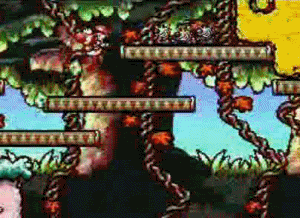 2. Super Mario SagaSuper Mario All-Stars: Trivia for Super Mario Bros. & Lost Levels: 2. Super Mario SagaSuper Mario All-Stars: Trivia for Super Mario Bros. & Lost Levels: There are graphical updates for all settings. There were several bug fixes. An extra block was added on top of the pipe at the end of water levels, preventing Mario from getting stuck in this place as it was possible in the original game. When Mario has more than 9 lives, they are displayed correctly. Glitches such as Minus World were removed, although Mario can still walk through the wall into the Warp Zone. The leftmost pipe will warp to World 4, however. During a game over, the player is asked to continue, save and continue, or save and quit. Mario/Luigi appears at the bottom, next to the logo of the game. In Super Mario Bros.: The Lost Levels, the game can be saved after clearing a level rather than a world. The entire music of the game was updated. A new background music plays in secret underground areas and the Coin Heaven. There is also a new Bowser battle music, which starts when the player reaches a false Bowser in a castle. The Bowser battle music is different for the real Bowser, however; that music plays in World 8-4 and World D-4. Trivia for Super Mario Bros. 2: Several enemies get a palette swap. Due to a mistranslation in the original manual, Birdo is now female. The music within the game has also been retouched and several sound effects from the characters have also been changed (such as when the hero picks up a vegetable or enemy). Saving is now possible. Trivia for Super Mario Bros. 3: There are graphical updates for all settings. A Battle Game is available from the title screen, slightly different from the one accessible from the map in a 2-player game. It introduces the Reverse Mushroom. The White Mushroom Houses are colored blue, not white. Mario's last life before a Game Over is "Mario times 1"; in the NES it was "Mario times 0". Three coins were added to 2-2, meaning that Mario can get the White Mushroom House without collecting any from the group located far away from the P-Switch. No time limit in map pipes. The Ice Blocks in 3-9 were made a half-curve, fixing a glitch involving shooting the ice blocks and then doing a duck jump to go down the side of the pipe. The first Toad House in World 6 now has a Hammer Suit so that Mario can get a Hammer Suit without having to do 6-5. The Ice Block structure in 7-5 was moved to the right, fixing a glitch similar to the one in 3-9. In the second World 7 Piranha Plant level, the Pipe at the end of the screen was heightened with a block added at the very top so that Mario cannot fly on top of the Pipe and lose a life. Saving is now possible, but only to the start of the last world. Mushroom houses and minigames are now optional. Airship cannons have a more realistic sound effect. Trivia for Super Mario World: According to Shigeru Miyamoto, sixteen people were involved in the creation of the game, and it took about three years to make. None of the Koopalings' sprites are the correct color of their game artwork, except for Larry. It should be noted that all of their in-game colors are the colors of the Koopa Troopas of Super Mario World, with the colors going from yellow, to blue, to red, to green, from oldest Koopaling to youngest. Miyamoto stated that he had wanted Mario to have a dinosaur companion ever since Super Mario Bros.; however, Nintendo engineers could not fit the companion into the limitations of the Nintendo Entertainment System. He said that "we were finally able to get Yoshi off the drawing boards with the SNES". Yoshi came in one size and four colors, with different powers and huge appetites. Super Mario World 2: Yoshi’s Island: The game was placed 18th in the 100th issue of Nintendo Power's "100 best Nintendo games of all time" in 1997. While the English version is called "Super Mario World 2", the original Japanese title is "Super Mario: Yoshi's Island". This was to draw a connection to Nintendo's earlier SNES success, Super Mario World. However, this also generated a lot of confusion as to whether to call it a sequel or not, even if it is clearly a prequel to the entire series. Similarly, Super Mario World was also known as Super Mario Bros. 4 in Japan. The music for World 6 map is a stripped down version of the music that plays when the maps of the other 5 worlds are complete. Also, the music that plays in most areas of World 6 is the underground music. The game places 185th in the 200th Issue of Game Informer's "Top 200 Games of All Times", the lowest ranked Mario series game. Originally, the sequel to Super Mario World was going to be Super Mario's Wacky Worlds instead of Super Mario World 2: Yoshi's Island, and it was originally going to be released on the Philips CD-i. However, that game was cancelled because Nintendo noticed a drop in the Philips CD-i's popularity occurring in 1994. 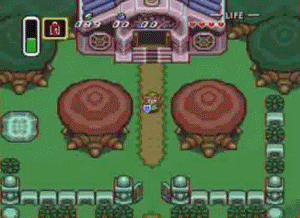 1. The Legend of Zelda: A Link to the PastTrivia for The Legend of Zelda: A Link to the Past 1. The Legend of Zelda: A Link to the PastTrivia for The Legend of Zelda: A Link to the Past: With a total of twelve dungeons, A Link to the Past has more dungeons than any other official Zelda game. The bronze plates on the walls of inside the houses in Kakariko Village, which occasionally dispense Rupees when pulled by Link, strongly resemble Mario. Unlike previous games in the Zelda series, this game was not manufactured in a gold-coloured case. There is a secret room called the Chris Houlihan room. It is the result of a Nintendo Power contest, where the winner would get a secret room named after them. In The Legend of Zelda: Collector's Edition released on the Nintendo GameCube in 2003, The Legend of Zelda: A Link to the Past was the only Zelda home console game not included. The game innovates on dungeon design of previous installments by adding the concept of multiple floors & layers, including basements. At the time, most SNES game cartridges had 4 Mbit (512 KB) of memory. This game broke the trend by using 8 Mbit (1 MB), allowing the Nintendo development team to create a remarkably expansive world for Link to inhabit. Like Super Mario World, this game used a simple graphic compression method on the SNES by limiting the color depth of many tiles to eight colors instead of the SNES's native 16-color tiles. The tiles were decompressed at runtime by adding a leading bit to each pixel's color index. Memory was also saved by eliminating duplication: The Light World and the Dark World are almost identical, and reverse engineering of the game's ROM contents has revealed that only the differences were saved. A Link to the Past, like the previous two entries in the series on the NES, features a counter that registers the number of times a player received a "Game Over" screen during the course of the game. This total is shown in the ending sequence (which also gives the breakdown by dungeon) and on the save file after finishing the game. The SNES version adds to the counter every time the user selects "Save and Quit", so the only way to achieve 000 is to complete the game in one continuous session. The English localization included a number of changes to the original Japanese game. The most common change was the removal of religious references. The most obvious change was made to the subtitle of the game, which was changed from Triforce of the Gods to A Link to the Past. The font used to represent an unreadable language, Hylian, originally had designs of a vulture and an ankh. These designs were based on Egyptian hieroglyphs which carry religious meanings, and they were altered in the English version. The localization also made changes to plot details included in the instruction manual. |
 |
 |
 |
 |
|
|
|
|
|
|
|
|
|
|
|
|
|
|
|
|
|
|
|
|
 |
 |
 |
 |
Truly epic, Sir Master! You are quickly becoming the 'Top Ten' master. Excellent game choices all around. I've always wanted to play E.V.O. ever since I read about it in Nintendo Power, I think this is the first time I've actually seen a video for it. Looks very interesting! As always, your list is packed with so much information. (Such as: I didn't know about all the extra stuff in the GBA DKC games.) Regarding F-Zero's name: sirmastersephiroth said:It’s just so much fun to zip along in zero gravity racers (hence the name). Is that so? I thought the story in the game was that the races were based on the Formula-1 (F-1) races that were popular on Earth before F-Zero started. Or that may be part of the story... I definitely agree that if I had to pick one game from the Mario saga, it would be Yoshi's Island. It's my favorite 2-D platformer of all time. Awesome gifs! And... TRIVIA OVERLOAD. But I like it! I read through it and learned some stuff. I didn't realize the title Diddy's Kong Quest does resemble 'conquest.' And how AWFUL that Yoshi's Island placed 185th in the 200th Issue of Game Informer's "Top 200 Games of All Times." @ShadowlinkAs am I. |
 |
 |
 |
 |
|
|
 |
 |
 |
 |
Once again, thank you all for your support and kind words. @kriswright Thank you. I'm quite happy to be of service. @Shadowlink Star Fox was always going to be on this list. There was no question on my mind. anon_mastermind said:Edit: Nice gifs, too! Thanks! They were a lot of fun, but tedious to make. Secret_Tunnel said:It's been too long since I've played ALttP. I'd be all over a 3DS re-release. I'm sure we will see it in some way on the 3DS. X-pert74 said:Why have I never heard of EVO before now? It's a really obscure SNES game. I rented it once because I liked the cover and I fell instantly in love. Every Thursday, when I look at Nintendo's press release, I hope to see it on the VC. No such luck yet. @roykoopa64 I didn't know a lot of the stuff either. This has been a journey of discovery for me too. And regarding the F-Zero name, we are both right (or half right). They are named after Formula One racers of old but they defied the laws of gravity. If I'm not mistaken, though, there was a league called the F-Max before F-Zero. Thank you for your compliment on the GIFs.I plan on using them more, now that I know how to make them. Anyone interested in learning, please refer to this thread. It takes trial and error and a lot of patience, but once you learn how to do it, you'll love it. And once again, I had to cut a lot of the trivia to retain the 30,000 character limit. I was surprised when I read that bit about Yoshi's Island too. I'm guessing not a lot of people played Yoshi's Island back then, including me. |
 |
 |
 |
 |
|
|
|
|
|
|
|
|
|
|
|
|
|
|
|
|
|
|
 |
 |
 |
∧ |
Forum main |
|
|




